Table of Contents
Why Bother with a GHD?
While deadlifts are known for being the best exercise for your glutes and hamstrings, glute ham raises are an excellent accessory exercise or the best option for people who are not able to deadlift due to back problems.
The problem with most weight machines is the muscles in your body don’t work best in isolation. For fluid, strong movement, they want to work in groups of several muscles at a time. A limited amount of muscle isolation can therefore be more effective than machines. Bodybuilders may add machine isolation exercises too, but it’s with the knowledge that it’s supplemental to the compound movements that have a more free range of motion and require some stabilization from other muscle groups.
A glute ham developer, or GHD, is not one of the first few things you would get for a home gym. You would generally want a bar and plates, some kind of rack, and depending on what kind of workouts you do, maybe a piece of cardio equipment, a bench, kettlebells, and other things that you can get a lot of exercises out of like a cable crossover or functional trainer.
Once you’ve got a few things, a GHD starts looking pretty good as an accessory unit for your hamstrings, lower back, and abs. You can do glute ham raises, traditional back extensions, sit ups, some slight variations like twist sit ups, and even a few barbell exercises.
How I’m Comparing Them
I am not wasting your time here with the standard features you can find on product pages, many of which are the same between models. That doesn’t help you.
This guide will show you a few major positives and negatives of each model. The basic design of a GHD is well-established. Still, there are many differences between the models that you should know about. Here are some issues I’m looking at:
- Price
- Weight and stability
- Hip pad firmness
- Step-up design
- Adjustability
- Parts quality and fit
Highlights and Drawbacks of Each Model
Rogue GH-1
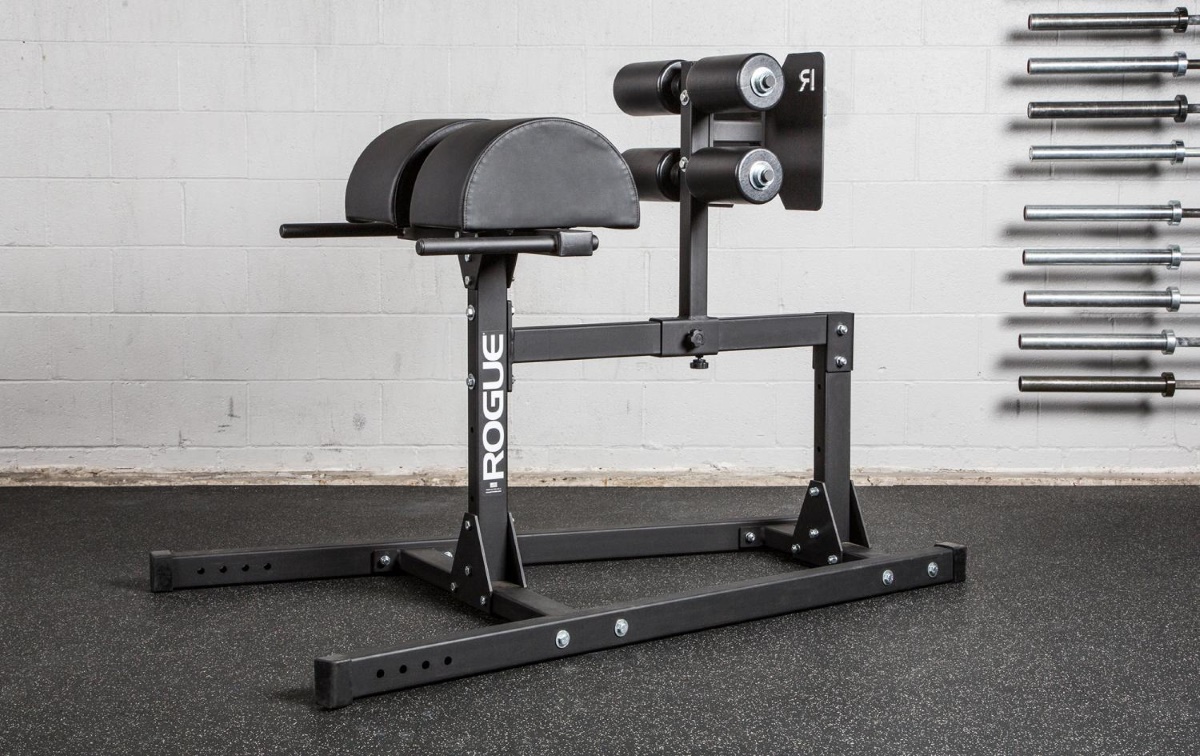
The GH-1 was built after the more expensive Rogue Abram, as a cheaper model to reach customers who couldn’t quite stomach the cost of a $700 GHD. It also looks more like the original Abram GHD (1.0). The Abram is now in version 2.0 with significant changes.
I compared all four of the Rogue GHDs here.
The horizontal adjustment mechanism of the GH-1 is pretty standard. Pull the spring pop pin to release the carriage and slide it along the frame to adjust to the desired distance of your feet to hips. The hand screw then tightens it in place. One person complained that you have to screw that sucker really tight to prevent the foot portion from wobbling. Sounds annoying.
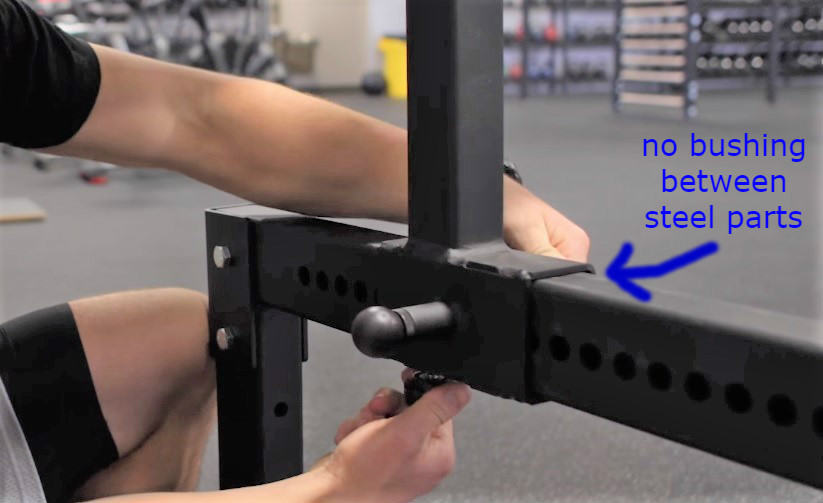
Be forewarned that the carriage slides right against the bare frame, steel on steel. There is no bushing in it to protect it and smooth out the adjustment. Be ready for scratches.
In comparison, the Abram 2.0 uses a swing-arm horizontal adjustment with no hand screw needed to make it feel stable. The swing arm design also means a lower center of gravity of the frame, a good thing for a touch more stability.
The steel tubing includes partly 2×2 tubing, rather than entirely 2×3 like the Abram. 2×2 is what’s used on cheaper equipment, from benches to machines to power racks. It has the potential to wobble more. Steel flexes, and the smaller tubing allows more of that. It’s 195 lbs, still pretty heavy as GHDs go, so they must have used some pretty thick gauge steel.
Rogue GH-1 Price: $645 at Rogue
Titan GHD
Titan is known for their low prices. In fact, their prices are so low that people who ordinarily would spend more are willing to take a gamble with Titan.
We did a hands-on review of the Titan GHD.
Major takeaways from our review, and a few more notes:
Titan’s GHD is a direct copy of the Rogue Abram GHD v2, with modifications to make it cheaper. You can tell by looking at the swing arm adjustment, which for a time was unique on the Abram. It looks almost identical on the Titan.
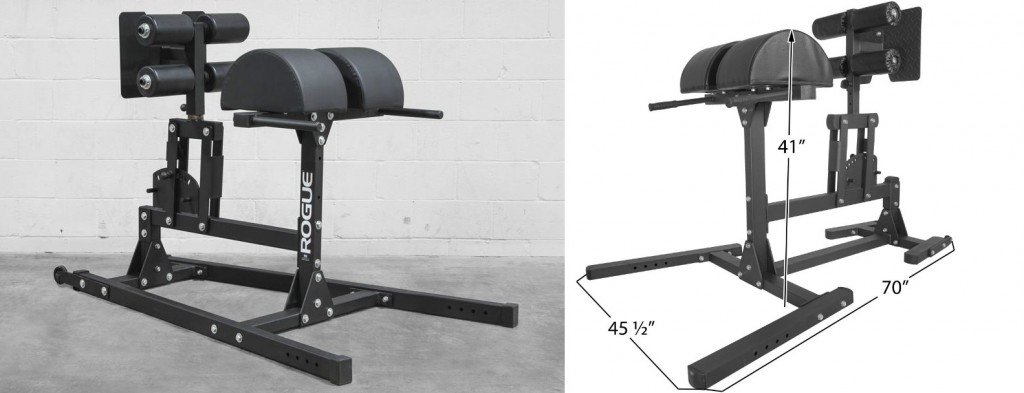
The Titan model weighs 190 lbs, about the same as the Rogue GH-1.
To cut the price from the design of the Rogue Abram, Titan removed the middle section of the base, removed an inch off the height, and tightened up the footprint an inch or so. Still, 190 lbs is impressively heavy duty, especially for Titan.
There are more details that you wouldn’t know if you go by the product specs –
The hip pad is arguably too soft, and as you press into it, the vinyl covering on it becomes loose, making it not feel like a high quality piece. Firm pads are important with any kind of bench or equipment like this. Go to a nice gym that has all full commercial grade equipment and you’ll notice the pads are all very firm.
It is not unusual for Titan’s equipment to arrive scratched up, as the Titan GHD we reviewed did. It’s an issue with all brands of gym equipment, due to the weight. Other brands mitigate the issue better by improving their packaging. Titan has chosen to go with the minimum packaging to save on cost, as that is their niche. It isn’t an item you have much room to complain about when your stuff arrives scratched. You wanted budget, and you got it.
Titan’s stuff also has a reputation for having parts that aren’t quite as nicely made as Rogue. Nothing major. It looks good from far away.
On the positive side, if there any major problems on day one affecting use or safety like a bent part, you can count on Titan replacing it. If you’re OCD, you need to go with another brand.
Price: $600 at Titan Fitness
Rep GHD
Rep Fitness is known for having products with the same attention to detail as Rogue, and for a lower price. In this case the price is 30% less than the Rogue GH-1. That makes it worth a serious look.
First off, it has bearings in the horizontal carriage you adjust for user height (since you’re horizontal while using it), sliding on chrome plated guide rods. That’s a nice touch. It makes it super easy to adjust. However, it does not have a hand screw lock on it to tighten it down like other brands have, so the jiggles. It’s something you could notice on assembly. The effect of this in use is negligible. It is under tension as your ankles pull up on the foot pads, and you don’t notice the play much.
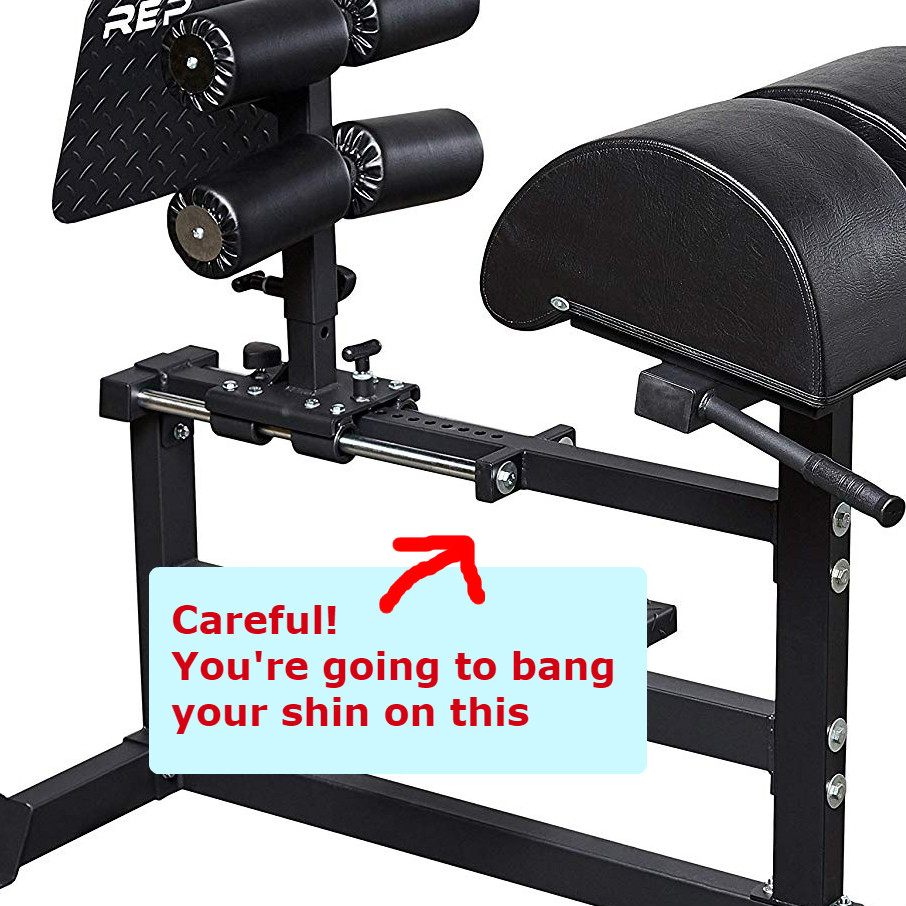
The horizontal adjustment has a steel stopper piece that is sharp and is bound to make contact with your shin if you aren’t careful when getting on and off. It’s there because of the nice way that Rep has guide rods instead of making a horizontal frame that slides telescopically like some other brands. Still, it would be incredibly nice if they rounded out the edges of it.
I like the step-up plates. That’s a feature you normally only see in expensive GHDs like the Rogue Monster GHD. Makes you feel more like you’re doing things right and not climbing on and off your stuff like a monkey. Less chance of slipping of course is the point.
Band pegs built in! Another plus. These are useful for people who are experienced with the movement and want to add some resistance with bands.
The foot rollers are not great. They’re thin and soft foam. Minor issue to take into account. The hip pads are nice and firm. That’s what’s important.
The vinyl covering is noticeably loose fitting. See the pic above. The pad underneath is firm as I said, so you’re just looking at the movement of the covering. That should not be a deal breaker for anyone. But hey, I’m noting it, because that’s what I do. Maybe they will tighten it up someday.
The hip pad has a nice design that wraps over the support board so that there’s no chance of the board digging into your thighs, unlike with the Fringe model.
This unit feels solid and does not budge under the weight of quite large people.
Price: $480 at Rep Fitness.
Valor CB-29 GHD
I used to sell some Valor equipment, mostly racks and benches. Valor is better than most eBay and Amazon off-brand stuff. Nothing groundbreaking. I mean, they try to be different sometimes, and whenever they do, they miss the mark. I believe they don’t have any active lifters involved in these decisions that would notice things like a plate storage peg getting in the way of certain movements on a power rack.
Their equipment is targeted towards home users. Nothing they make is exceptionally heavy duty. Their GHD is a good example. It weighs 117 lbs, the lightest by far of any GHD on this page, credited to the thin-gauge 2″x2″ frame construction.
It does have a weight storage peg that you can load with a couple 45lb plates to make it weigh as much as the competitors. That does help, but it doesn’t totally mitigate the issue. A lighter frame like this will wobble slightly under your weight, and no amount of plates added to the peg will change that.
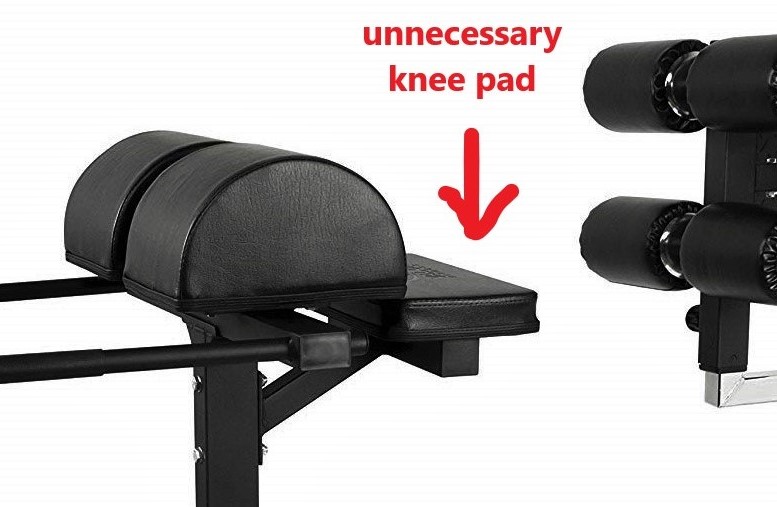
GHDs do not need knee pads. Valor included it because they were copying some other old model like York or whatever. When going all the way up in your glute ham raise movement, you don’t need to go all the way vertical. Moving your weight from the hip pad to the knee pad would just cause you to slip and rub your legs during the transition. Your thighs will stay on the hip pads just fine when you do a glute ham raise right. Fortunately, this knee pad relies on a separate frame piece that you can leave off altogether, so it is not a deal breaker at all.
Valor GHD price: Check on Amazon
FringeSport GHD
This article is getting way longer than I anticipated. Just one more model!
Fringe is known for their customer service and amazing 365-day return policy. Their products are good quality. The owner, Peter Keller, is an avid Crossfitter and lifter, and that kind of real world knowledge of equipment helps avoid issues that other small companies make in product design and quality.
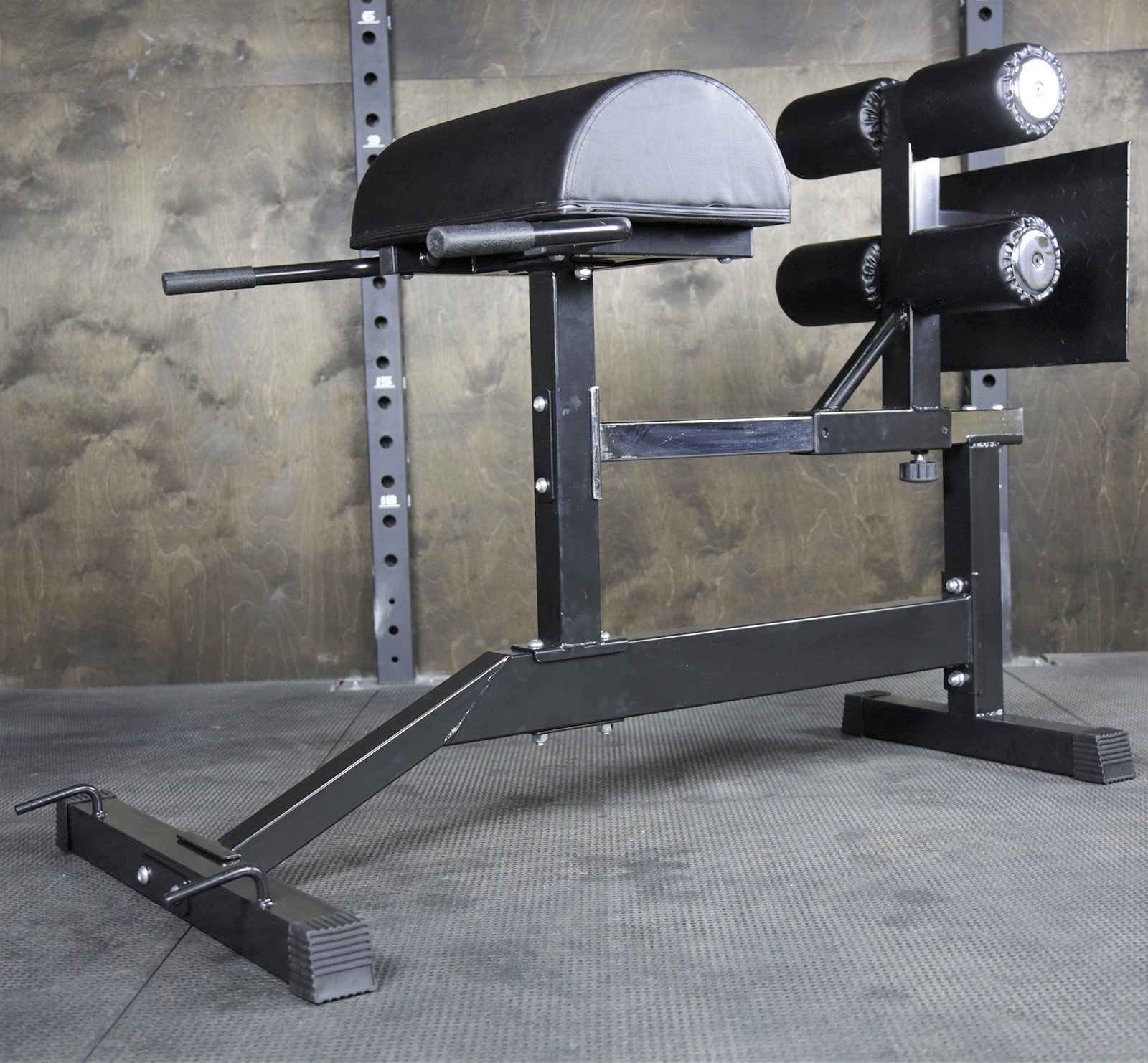
Like Rogue, they have a budget and commercial model of some of their equipment, and that goes for their GHDs. Naturally I’m just focusing on the budget model in this article.
Fringe opted not to include a vertical adjustment for the leg holders. The only adjustment is horizontal, for user height. The max user height is around 6’2″ because of the limited adjustment range.
Note that it’s possible to dig your thighs into the hip pad support board if you’re positioned in a certain way as you come up near vertical from a glute ham raise. Unlike others such as the Rep model where I noted their pad design that addresses this issue, Fringe has not addressed this yet.
Fringe GHD Price: $575 at FringeSport
The Winner
The best design for the price is the Rep GHD. This is not surprising. Rep wins a lot of these kinds of comparisons because they have such good attention to detail in their products, nearly the same as Rogue.
The current price of the Rep GHD is in the middle of the range here, as of my latest update in 2022. Don’t buy the cheapest of anything. Rep moved to free shipping like most others do, which means their pricing was raised a little at the same time.
The Rep GHD has a nice adjustment mechanism, good hip pad design, and comes with a step-up plate, band pegs and wheels. The only drawbacks are minor, as discussed, those being the loose-fitting upholstery on the hip pad and the high likelihood of banging your shin on a particular part.
Rogue is overpriced in the budget GHD market, which is not surprising. Rogue’s “budget” models tend to only be budget in comparison to other Rogue models. Valor’s design is flawed. Fringe has an issue with the hip pad design. Titan’s hip pad is too soft. Easy choice for Rep Fitness, in my opinion.
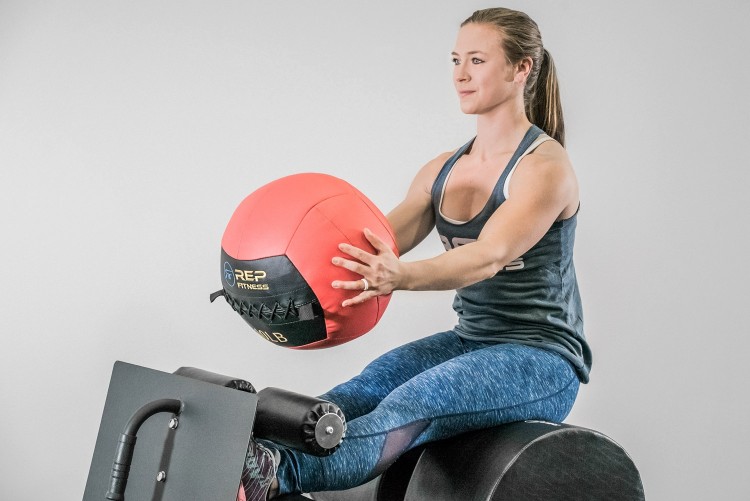

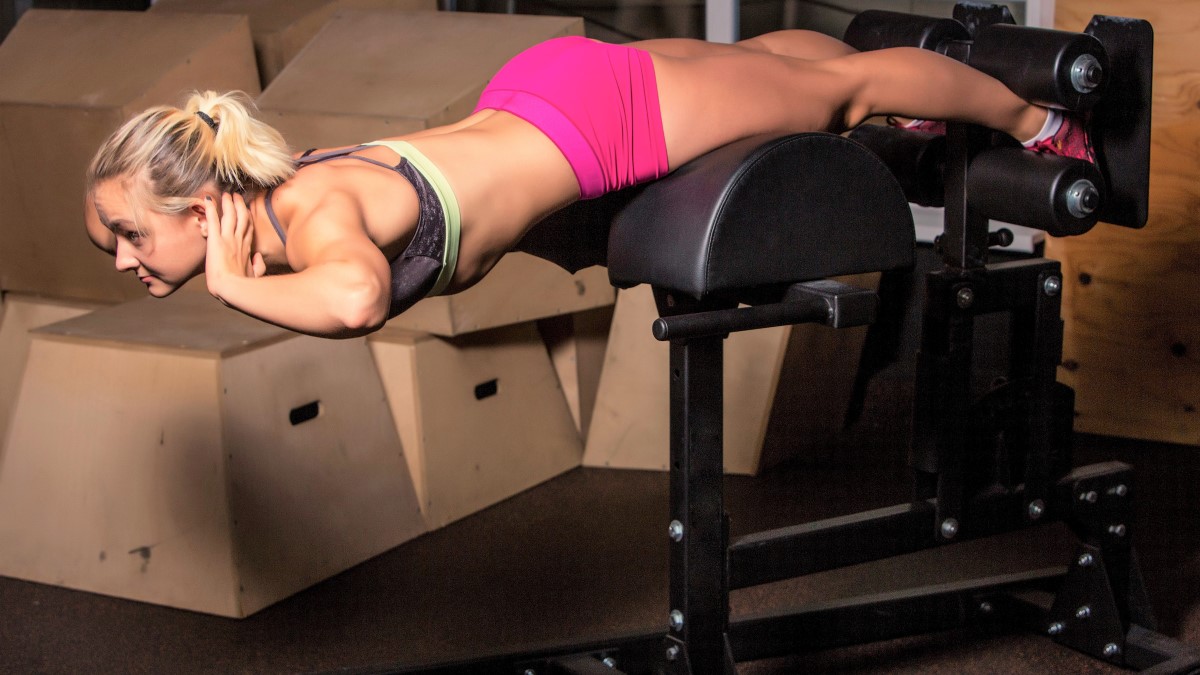
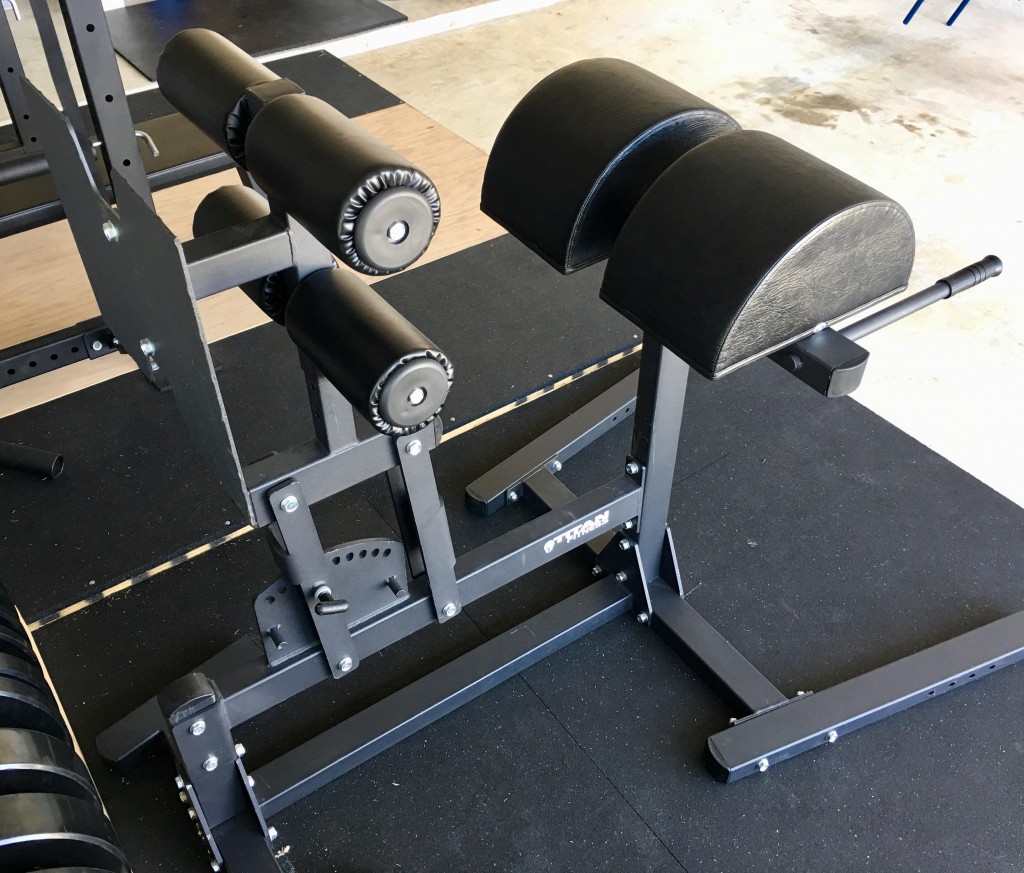
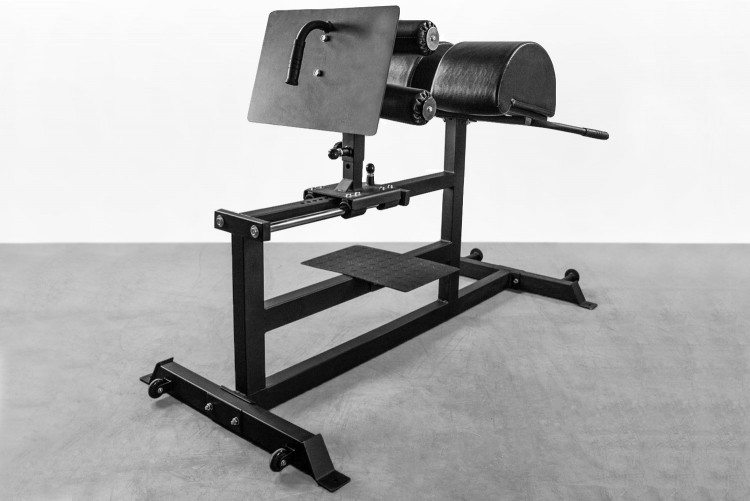
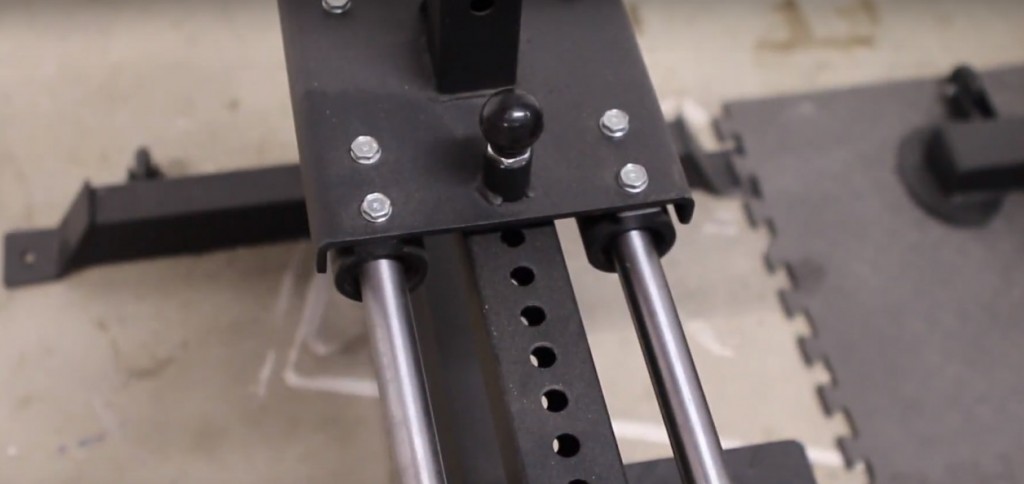
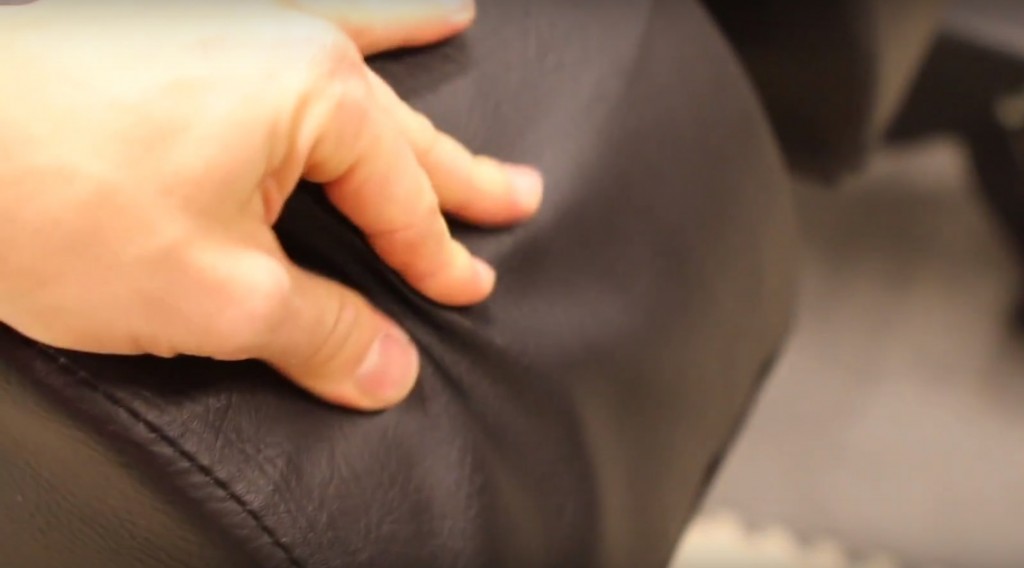
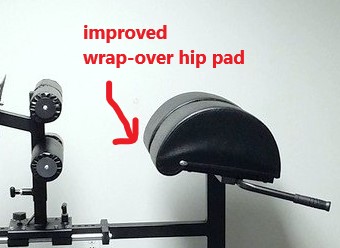
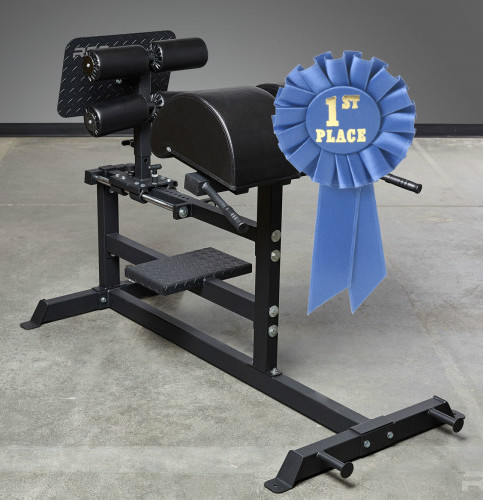
David, I don’t have space for 1 of those & im too cheap for them anyway, so I bought 1 of these: https://www.spud-inc-straps.com/glute-ham-strap.html
I just got it so I can’t review it yet, thought you might want to check it out for a follow-up.
It looks like their glute ham strap is just like a strap to hold your legs down? It seems like a weird name for a simple adjustable loop, and when it requires a bench and/or other stuff to be functional. Anyway I hope it works for you!
David,
It IS just an adjustable strap to hold the feet down. And unfortunately, it didn’t work for me; I couldn’t figure out how to adjust it out far enough to go over my feet and around my bench–but maybe that’s just me, I don’t know (comes with no instructions of any kind & I couldn’t find a solution online).
But I figured out something that DID work, and best of all, it was free to me: motorcycle tie-down straps. I have a bunch of those, so I tried 1 for holding down my feet & It worked just fine, I got a pretty good workout from it. I can’t compare it to a store-bought GHD because I’ve never tried 1, but so far as I can tell, to make it completely equal, I still need to do 2 things: elevate my bench, and figure out an analog for the humpy pads that enhance the stretch.
The 1st I’ll fix by, well, elevating my bench. The other I can fix with pillows or something. I’ll continue to do R & D on it & will report back.
Bummer! There’s also these NRS 1.5″ tie down straps I’ve been using regularly for another application for 11 years, outdoors, with no serious signs of wear.
https://amzn.to/346ZG87
Or the ideal thing might be a seatbelt strap, which is 2″, with a buckle sewn in like those above. Maybe too slippery?
I’ll keep refining the design and post an update.